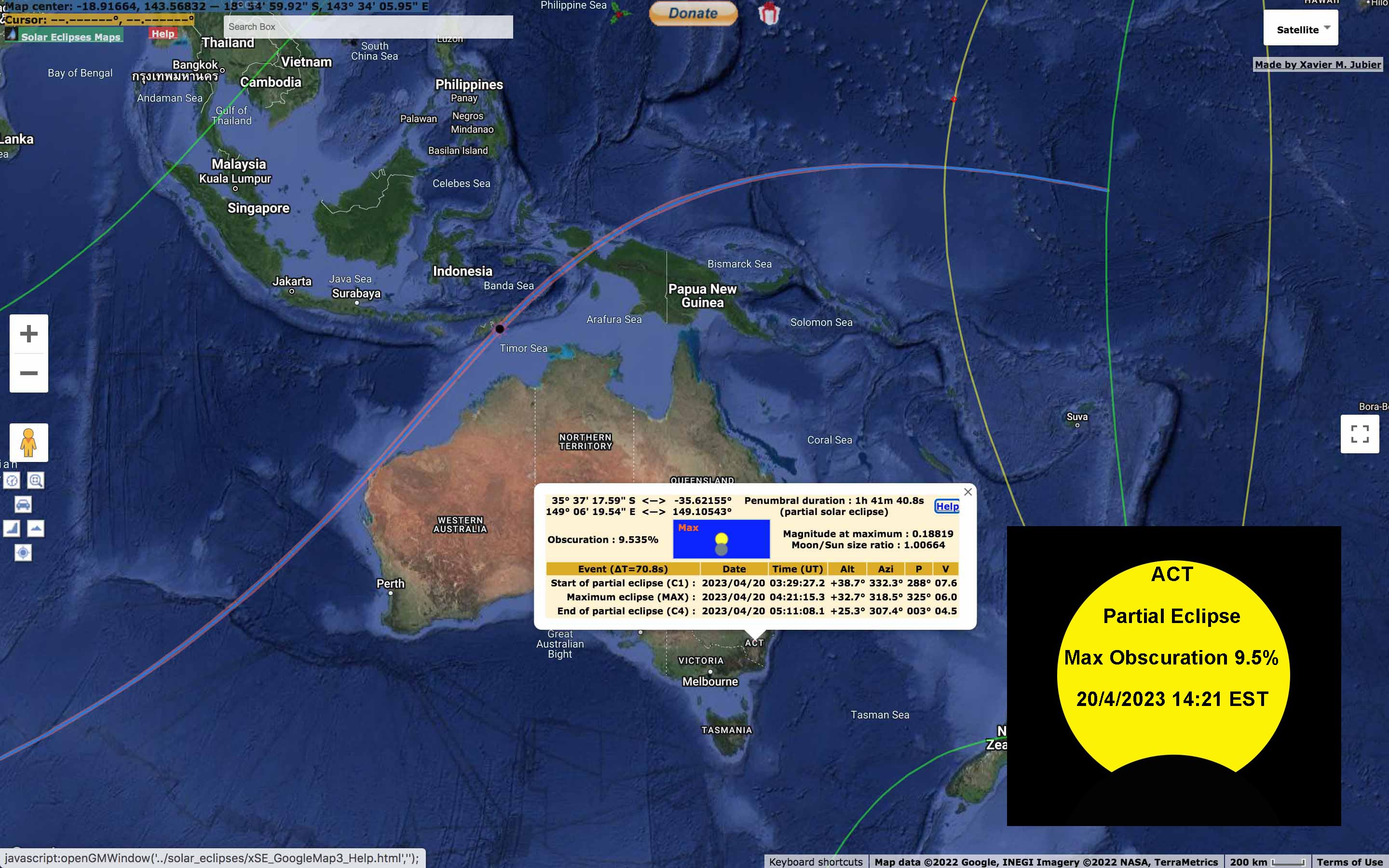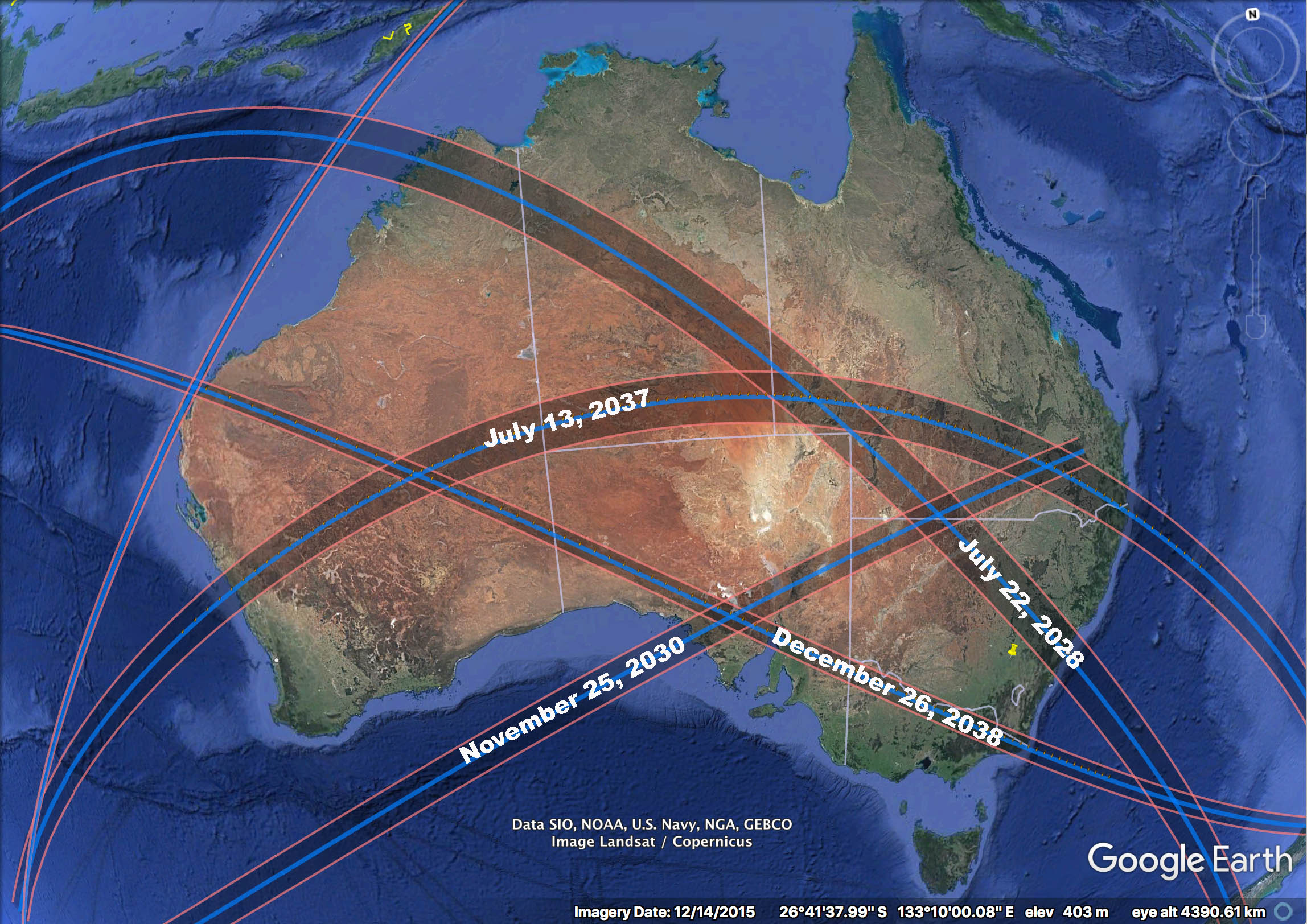
 |
WAITING FOR THE
SHADOW
Astronomical Observing and Photography - Joseph Cali
|
| PHOTOGRAPHY | ECLIPSES | ASTRONOMY | HOME PAGE |
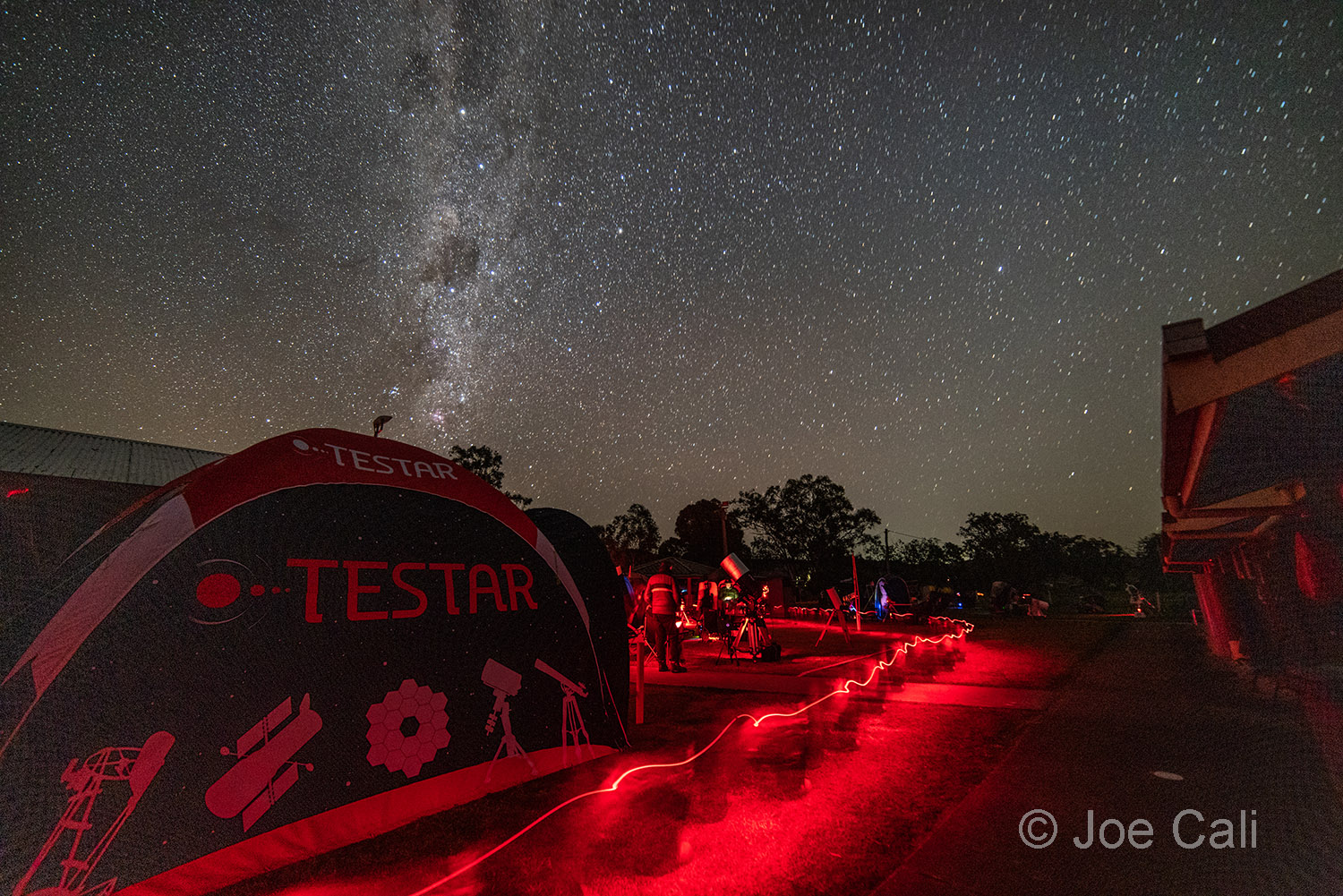
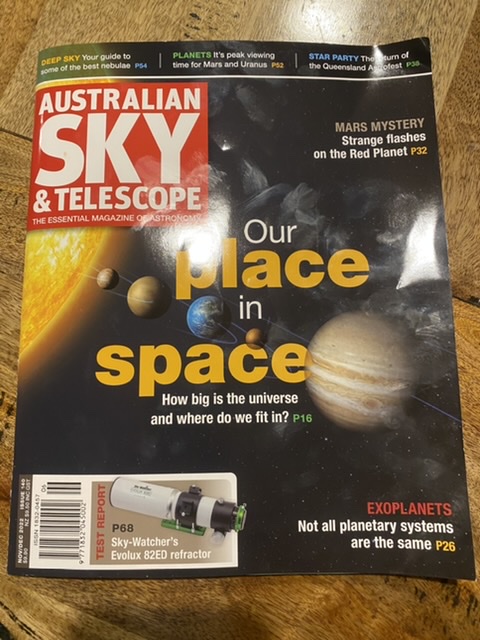 |
Queensland Astrofest Last July, I travelled to the Queensland Astrofest, held about 120km NW of Brisbane at Camp Duckadang. Queensland Astrofest is a ten day astronomy camp. Observing and photography by night, invited speakers during the day. I was one of the invited guest speakers and gave a two-part talk about nightscape photography across two of the days. The event was set to run for 9 nights/10 days. They had eight clear nights out of nine. Unfortunately, heavy rain occurred just before the camp was due to start causing the river level to rise above the bridge on the access road and cut off access to the camp for the first 4 days. A few people arrived early and got in just before the bridge was closed and enjoyed many nights of clear sky. I arrived on day 5 after the water level dropped gave talks on days 6 & 7 then stayed until the end. My mate Chris Cox wrote a 5 page article about astrofest that has just been published in Australian Sky and Telescope. While I was at Astrofest, Chris told me he was writing the article and ased if I could shoot a series of nightscape photos illustrating the event for him to use to illustrate. Chris brought his 28 inch SDM reflector from Brisbane out to the camp and I spent many an hour enjoying remarkable views of many objects through his remarkable scope and I featured the instrument in a number of my nightscapes. .......view my astrofest astrophotos |
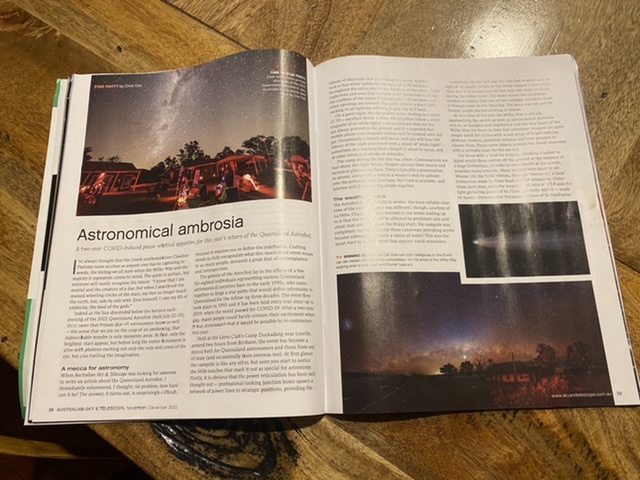 |
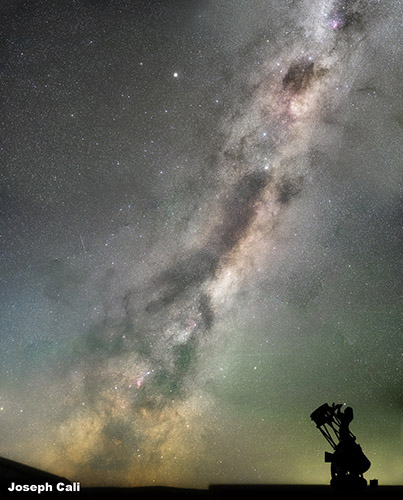 Milky Way Core & Emu (Gurgumin) 2 wide x 6 high x 1 min images stitched into a mosaic Pentax K1 ISO Date: Jan 19, 2021 Pentax K1 ISO 1600 Pentax M 50mm f1.7 @ f2.8 |
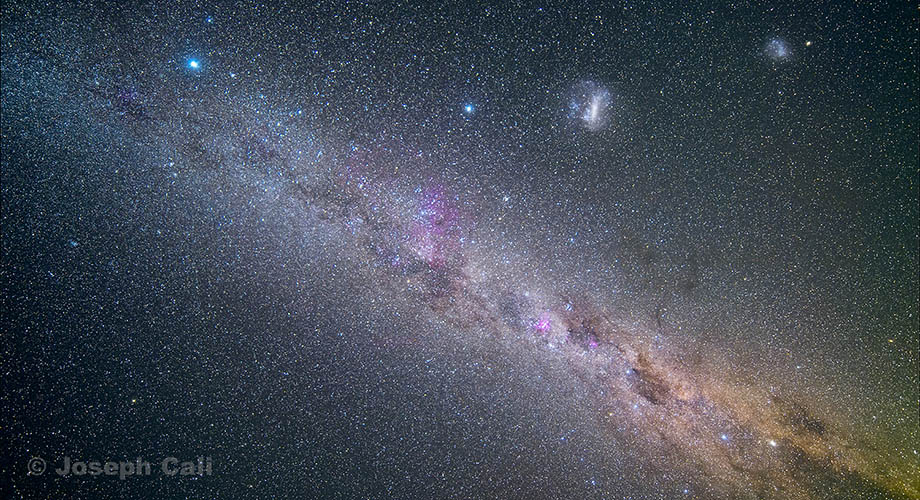 Date: January 7, 2021 Camera: Pentax K1 ISO 1600 Exposure: 6 x 150s Lens: Samyang 14mm f2.8 No darks, no flats, no bias, raw processed in Lightroom, median stacked in Photoshop. |
